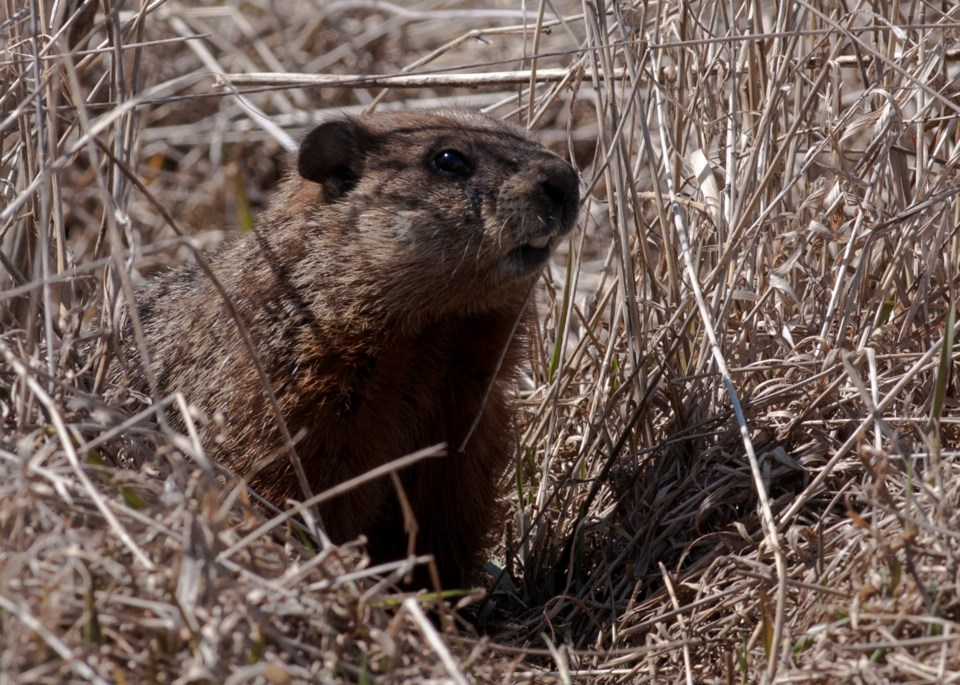As we move into February I hope that you’ve had time to take down all your Groundhog Day decorations and are now pinning your hopes for an early spring on actual meteorological prognostications. However, admittedly, neither source seems to be that accurate these days.
This winter seems destined to be called “The Winter of The Icy Slush” which is only slightly better than “The Winter Without Snow” but far behind “The Winter of Snow Up to the Telephone Wires.”
Today’s youth are missing out on opportunities to create fabulous stories for their eventual grandchildren. “Let me tell you about the winter of 2024! Slush everywhere! You couldn’t get from the car to the electronics store without having the brown slop get all over your shoes!” Just doesn’t seem to have the same punch as our tales of youthful adventures.
I have addressed the challenge to wildlife in dealing with this lack of snow cover in earlier columns, and this extended warmish period has certainly added to their woes. Predator species are pleased that food can now be somewhat easily seen, while prey species are ducking and dodging between clumps of exposed grasses.
There is some balance to this situation, as now is the time of year for foxes to travel far and wide searching for mates, so the easy pickings along the way ensure energy is obtained and retained; and the reduced mouse and vole populations will be welcomed by farmers.
Great-horned owls are also selecting both mates and nesting sites right now, and again the visual abundance of snowshoe hare and voles is no doubt welcome. Whether they can catch them or not is another story.
Two of our local mammals change the colour of their fur to match the season, both being brown in summer and white in winter. The short-tailed weasel (also called ermine) uses that white camouflage as a hunting advantage, whereas the snowshoe hare tries to look like it’s just part of a snowdrift to any passing by coyote, fox or owl ... which is kind of hard these days if there are no snowdrifts to blend in with.
White-tailed deer usually ‘yard up’ in the winter, moving into concentrated groups during the deep snow months, thus packing down trails to access hemlock twigs. The deer in our neighbourhood have stayed put so far, and wander widely eating apples and nibbling the twigs of maple saplings.
On the human side of things, we all know that ice fishing, snowmobiling, snowshoeing, skiing, and snow fort building has been a bust so far. However, you may not be aware that those who toil in the forest industry are also a bit peeved by the weather.
To remove logs from a woodlot or a plantation requires the use of big machines with big tires. Good forestry practices dictate that these machines should not be used when the ground is soft, as the tires will dig into and rip up the forest floor. So the push is on to remove marked timber during the time of hard frost and deep snow as each of these elements ensures minimal damage to the forest floor. Lots of equipment idling this winter.
The other group of forest users are the maple syrup producers. Again, a ‘normal’ winter of hard frost and good snow cover allows the maple trees to rest and burst forth with gusto in early March! Not so in this winter, as the continuous warm weather teases the trees into pushing up a bit of sap at a time, but not copious enough to fire up the boilers in the sugar shacks.
There will undoubtedly be a few more bitter cold nights before we do get to spring, and these frigid temperatures will seep into the sap-dampened twigs and buds causing freezing and rupturing in their cell walls. Not so much a mortality factor but a weakening effect just the same.
And to add to the situation, there seems to be a relationship between nitrogen fixing in the soils of our gardens and woodlots relative to the amount of snow cover. More snow means longer ground coverage which means the slow melt will allow the little bits of nitrogen to transfer from the snow crystals into the soil particles. Who knew?
It’s easy to broadly paint this as a global warming or climate change event, and it is, to an extent. But there have been many other winters of similar situation, winters that didn’t see humans instantly, incessantly, telling the world how things look in their yard.
It took Aunt Becky’s monthly letter to arrive to disclose the details of life on the farm: “Road was blocked for five days and lamp oil ran out. Thankfully had slaughtered a good hog and chickens are laying well.”
And who knows, 100 years from now your great-great grandchildren may gift the local museum with a pair of salt-stained running shoes, a remnant of “The Winter of Icy Slush.”



